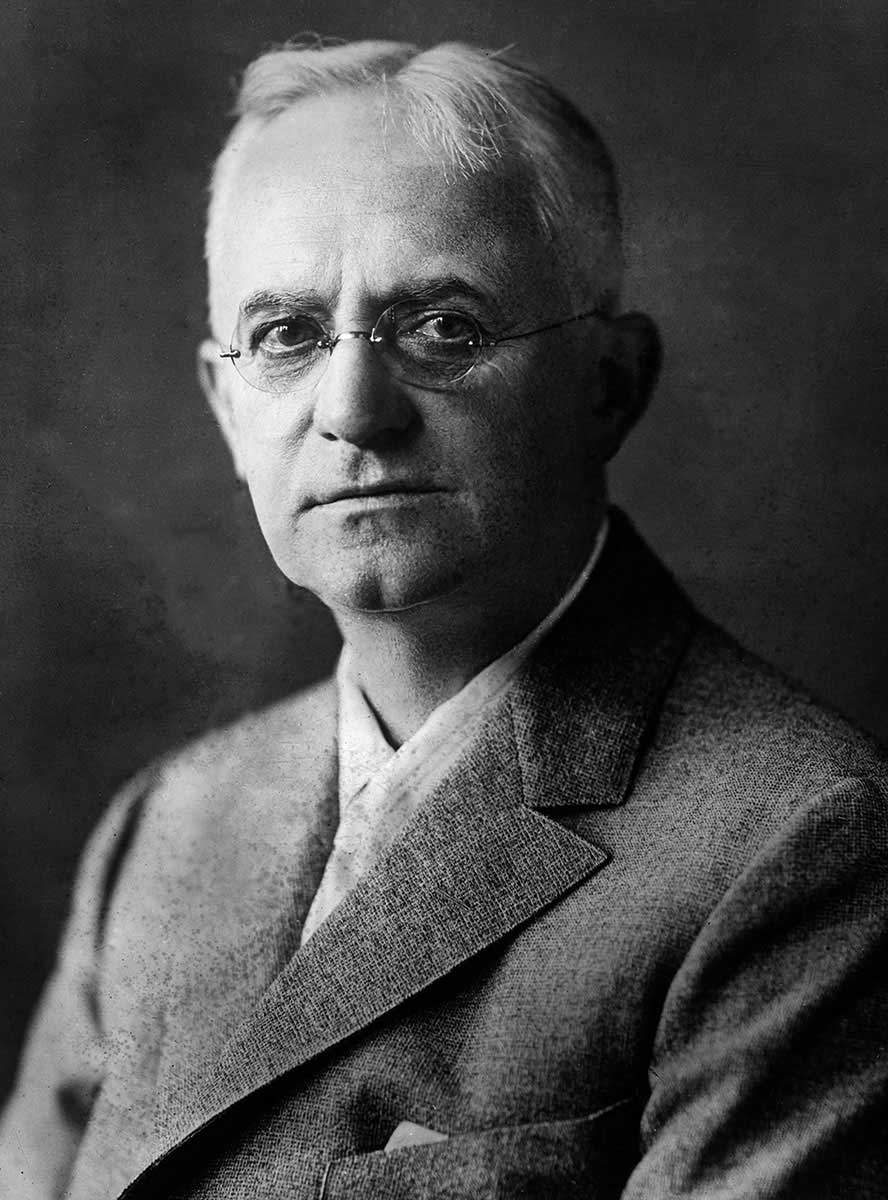“You press the button; we do the rest” George Eastman invented the roll film and made photography a real possibility for everyone. Sand Daguerre gave photography to the world, George Eastman put it within everyone’s reach.
It was he who replaced the bulky plates with handy film loaders, revolutionizing the photography and cinema market through the introduction of the standard 35 mm film format. The roll film was found in the creations of the pioneers of cinema such as Thomas Edison, the Lumière Brothers and Georges Méliès.
He was born on July 12, 1854 in the village of Waterville, New York, United States. When he was not yet six years old, the family moved to Rochester. Two years later his father died and the family was almost in poverty. He was able to attend school until age 14.

He started working as a messenger in an insurance company for three dollars a week, and at night he studied accounting. In 1874, after working five years in insurance, he secured a position as a junior employee at Rochester Savings Bank.
When he was 24, and after achieving good savings, he decided to take a vacation. He opted for Santo Domingo. The machinist who worked in the bank’s basement told him that he should take pictures of his trip. This suggestion, made at random, involved carrying a camera and very heavy attachments. In the end, he did not make the trip but from that moment on, he was caught by photography.
“Light makes photography. Embrace light. Admire it. Love it. But above all, know light. Know it for all you are worth, and you will know the key to photography.”
Photography became a real obsession, and he thought that the complicated process needed to be simplified. He read in British magazines that photographers were making their own gelatin emulsions.
In April of 1880, he rented the third floor of a building on Rochester State Street and began manufacturing dry plates for sale. He began doing night experiments to simplify the process of photographing, alternating with his daytime work in a bank.
He obtained some results and in 1881 founded with Henry A. Strong, the Eastman Dry Plate Company. After some inconveniences in terms of the components of the photographic plates they produced, they finally achieved success and moved to a better building.
In 1884, he patented the first film in the form of a roll that turned out to be practical. In November 1885, Eastman invented the nitrocellulose film for image printing.
In September 1888, Eastman registered the Kodak brand and received a patent for his camera that used the roll film. That same year, he launched the Kodak 100 Vista camera, which used reels of 100 circular photos and for whose promotional campaign he coined the phrase «You press the button, we do the rest». The most important thing is that as of this moment, great knowledge in photography or in the use of chemical products was no longer required.
This camera was already sold and ready to take photos. Once used, it was returned to the parent establishment that removed the reel, revealed photos and returned them next to the already loaded camera. As early as 1889, Eastman exchanged the paper reel for a celluloid one.
From that year on, he introduced innovations in the field, including: The Brownie camera, cameras and projectors 8 mm. for fans, Kodachrome films, Kodak Instamatic cameras and others.
In 1892, he founded the Eastman Kodak Company, in Rochester, one of the first companies to produce photographic material in series. This business that little by little was acquiring the rival American firms and broke into the European markets, was the first company that implemented the sanitary services and that distributed the benefits with its employees.
The Kodak company also manufactured the flexible transparent film, conceived by Eastman in 1889, which proved to be decisive for the subsequent development of the film industry. He was in the company holding an administrative and executive position until his death and contributed greatly to the development of other means of investigation.
Eastman was also one of the most prominent philanthropists of his time, as he gave more than $75 million to various projects. His contributions include a donation to the Massachusetts Institute of Technology, the founding of the Eastman School of Music in 1918 and a school of medicine and dentistry at the University of Rochester in 1921.
He passed away on March 14, 1932 in Rochester, New York.






